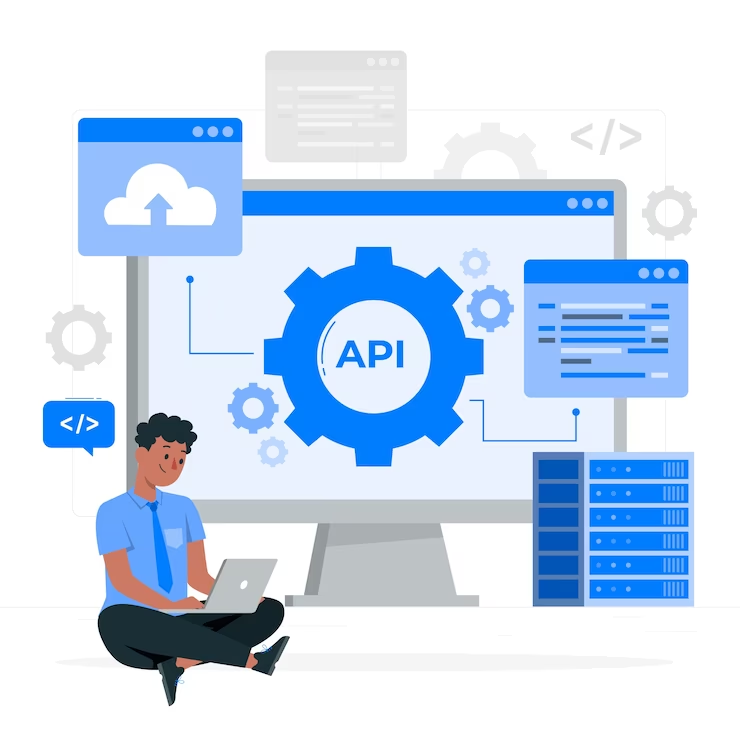API Penetration Testing
As organizations increasingly rely on APIs to power their applications and connect various systems, ensuring the security of these interfaces is paramount to safeguarding sensitive data and maintaining the trust of your users. Our API penetration testing services are designed to thoroughly assess the security posture of your APIs, identify potential weaknesses, and provide actionable recommendations to mitigate risks effectively.
Why API Penetration Testing Matters?
APIs serve as the backbone of modern digital ecosystems, facilitating seamless communication and data exchange between different applications and services. However, their inherent complexity and interconnectedness make them susceptible to a wide range of security threats, including:
Injection Attacks: Malicious actors may attempt to exploit vulnerabilities in your APIs to execute injection attacks, such as SQL injection or XML injection, to gain unauthorized access to sensitive data or manipulate system behavior.
Authentication and Authorization Flaws: Weaknesses in authentication mechanisms or improper authorization checks can allow attackers to bypass security controls and gain unauthorized access to restricted resources or perform unauthorized actions.
Data Exposure: Inadequate data protection measures may lead to the exposure of sensitive information through APIs, putting user privacy and organizational data at risk of unauthorized access or disclosure.
Broken Access Controls: Improperly configured access controls can enable attackers to escalate privileges, access unauthorized resources, or perform actions beyond their authorized scope, potentially leading to data breaches or service disruptions.
Denial of Service (DoS) Attacks: APIs are vulnerable to denial-of-service attacks, where malicious actors attempt to overwhelm the API infrastructure with excessive requests, causing service degradation or disruption.
Our API Penetration Testing Approach
At D2i Technology, we employ a comprehensive and systematic approach to API penetration testing, leveraging industry-leading tools and methodologies to identify and address security vulnerabilities effectively. Our process typically includes the following steps:
Discovery and Enumeration: We begin by thoroughly understanding the scope of your API infrastructure, identifying all endpoints, parameters, and authentication mechanisms.
Vulnerability Assessment: We systematically assess your APIs for common security vulnerabilities, such as injection flaws, broken authentication, sensitive data exposure, and more.
Manual Testing and Fuzzing: Our experienced security professionals conduct manual testing and fuzzing techniques to uncover complex security issues that automated scanners may overlook.
Authentication and Authorization Testing: We evaluate the effectiveness of your authentication and authorization mechanisms, ensuring that only authenticated and authorized users can access sensitive resources.
Data Validation and Integrity Checks: We verify the integrity and validity of data exchanged through your APIs, preventing data tampering or injection attacks that could compromise the integrity of your systems.
Security Headers and Transport Layer Protection: We assess the implementation of security headers and transport layer protection mechanisms, such as HTTPS, to safeguard data transmission and prevent eavesdropping or tampering.
Documentation and Reporting: Upon completion of the testing process, we provide you with a detailed report outlining our findings, including identified vulnerabilities, their potential impact, and actionable recommendations for remediation.
Benefits of Choosing D2i Technology for API Penetration Testing
- Expertise and Experience: Our team comprises highly skilled security professionals with extensive experience in conducting API penetration testing across diverse industries and technologies.
- Customized Solutions: We tailor our testing approach to suit your specific business requirements, ensuring thorough coverage of your API infrastructure and addressing your unique security concerns.
- Compliance and Regulatory Support: Our services help you meet regulatory requirements and industry standards, such as GDPR, HIPAA, PCI DSS, and more, by ensuring the security and privacy of your API-enabled systems.
- Continuous Support: We provide ongoing support and guidance to help you implement remediation measures, enhance your security posture, and adapt to emerging threats and vulnerabilities.
Protect Your APIs with D2i Technology
Don't leave your API infrastructure vulnerable to exploitation. Partner with D2i Technology for comprehensive API penetration testing services and safeguard your critical assets against security threats. Contact us today to learn more about how we can help secure your APIs and protect your organization from potential risks.
API Penetration Testing Phases

- Information Gathering
- Collecting data about the API architecture, endpoints, and functionalities.
- Authentication Testing
- Evaluating the effectiveness of authentication mechanisms.
- Input Validation Testing
- Identifying and mitigating input-related vulnerabilities.
- Authorization Testing
- Assessing access controls and permissions.
- Security Headers Analysis
- Reviewing and validating security-related HTTP headers.
- Session Management Testing
- Evaluating how sessions are handled and secured.
- Error Handling and Logging Analysis
- Examining error messages and logging practices.
- Data Integrity Testing
- Verifying the integrity of data transmitted through the API.
- Rate Limit Testing
- Ensuring rate limiting and throttling mechanisms are effective.
Common API Vulnerabilities

- Injection Attacks
- SQL injection, Command injection.
- Broken Authentication
- Weak authentication mechanisms.
- Insecure Direct Object References (IDOR)
- Unauthorised access to resources.
- Security Misconfigurations
- Improperly configured security settings.
- Broken Function Level Authorization
- Unauthorised access to privileged functionalities.
- Excessive Data Exposure
- Risk of data breaches and privacy violations due to unnecessary information exposure.
Compliance and Standards
- OWASP API Security Top 10:
- Guidelines provided by OWASP for API security..
- API Security Best Practices
- Industry-standard practices for securing APIs.